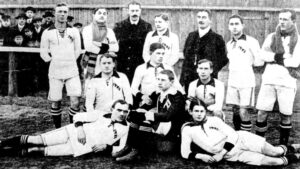The history of soccer in Poland begins when the county didn’t technically exist – having been partitioned by larger powers. Like the rest of the country, Polish soccer eventually united after Poland was reassembled after WWI. Soccer was again set back in WWII when the Nazis banned the Poles from organizing games, fearing that fed into uniting them. After the war, Polish soccer was again reassembled and went on to a golden age during the 70s and today also enjoys several commendable players and teams.
As many SRAS students in Poland have enjoyed attending games there, Popkult has compiled, with the help of our Online Research Internship Program, the following introductory guide to Polish soccer.
Early History of Polish Soccer
In 1863 when football’s official rules were being written in England, modern-day Poland was divided between three neighboring powers, the Habsburg Monarchy, the Kingdom of Prussia, and the Russian Empire.
The Russian-dominated territory was a traditionally agricultural area. Russia encouraged industrialization in the city of Łódź by offering special tax breaks. This did bring in some foreign investment. In 1906 a Scottish corporation purchased a factory there and the British engineers and workers who came to work at that factory established the first soccer clubs in the city. Soon teams were popping up in and around Łódź, including Newcastle, founded by German textile workers with an English coach in 1910, shortly followed by Touring Club, a cycling team that expanded into football. In 1909 the Lodzer Fußball Verband was formed as the championship of Łódź and became official in 1912.
Prussian-ruled Poland was one of the most industrial and urbanized areas in all of Europe. Soccer came to this area from Germany, which was forming clubs by 1874. Teams were formed along ethnic lines, with Upper Silesia forming the first Polish team and, with the clubs Normania, Warta Poznań, and Ostrovia 1909, eventually forming the Greater Poland’s Association of Sports’ Associations in 1913 under the umbrella of the German Football Association. A separate regional association was formed in Upper Silesia.
Habsburg-controlled Poland was mostly poor and rural countryside, with the only two large cities being Kraków and Lwow (now Lviv and part of Ukraine, but then largely Polish). Both were educational centers and here, the first soccer clubs grew from educational institutions. The oldest ethnically Polish clubs were founded in Lwow around 1903 by teachers in secondary schools. In 1906, Kraków had a team based at Jagiellonian University and nearby Wisła had a team formed by secondary school teachers. The competition between these two cities is one of the oldest and most intense in Poland. There were also numerous Jewish and Ukrainian teams in the region. Unlike the Polish and Jewish teams, the Ukrainian teams did not join the Association of Polish Football. Many Ukrainian teams held competitions separate from the Polish ones, though some eventually did join in the mid and late 1920s.
In 1911, the Związek Polskiej Piłki Nożnej (Association of Polish Football) united most of the Polish teams in the area, including those that had grown in smaller towns, as an autonomous organization within the Austrian Football Association, established in 1904. Up until World War I the association organized the Championship of Galicia.
The Ekstraklasa: Polish Top League Soccer
After the end of World War I, all these regions became part of an independent Poland. Four regional soccer associations existed: in Kraków, Lviv, Poznań, and Lodz. In 1919, the Polish Football Association was formed to unite these regional associations. In 1921 the first Polish championship games took place. In 1923 the Polish Football Association got their FIFA (International Federation of Association Football) membership, officially bringing them into the world of European soccer.

The Ekstraklasa, originally called the Polska Liga Piłki Nożnej (Polish Football Lea-gue), was founded in 1926 and remains the highest tier of Polish club soccer. After some debate and power struggles, mostly from Krakovia, the league united Polish soccer clubs by 1928. Currently the league system is based on promotion/relegation, where the worst teams in the league get relegated and the teams that finish at the top get the chance to qualify for European competition (Champions League and Europa League). At present the three best teams get promoted and the three worst get relegated, but in the past that number has been one or two depending on the total number of teams in the league.
The early days of the league were dominated by teams from Kraków; Wisła Kraków, Cracovia, and Garbarnia Kraków won five of the first six seasons, followed by four straight years of Ruch Chorzów dominance.
The Polish National Team
Poland’s men’s national soccer team played their first official game in 1921 in Budapest, losing to Hungary 1-0. Their first win came half a year later 2-1 against Sweden. They participated in the 1924 Summer Olympic Games in Paris but did not get far. They made their first World Cup appearance at the 1938 tournament in France. During World War II the Polish Soccer Association (PZPN) was dissolved and the German occupiers forbade the organization of soccer matches, so the national team did not play between 1940 and 1945.
The National Team peaked between 1972 and 1982, and the 70’s are widely regarded as Poland’s golden age of soccer. Within this timeframe, the Polish team had a cluster of good results in tournaments including 1st place at the 1972 Olympics, 3rd place at the 1974 World Cup, 2nd place at the 1976 Olympics, and 3rd place at the 1982 World Cup. During this time Poland bested teams such as Argentina, Italy, Brazil, Portugal, Mexico, Belgium, and France, in these tournaments and their qualification games.
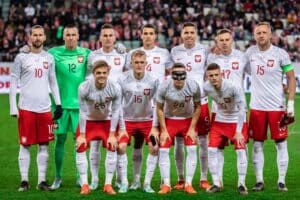
During this era, Kazimierz Deyna captained the national team through some of their podium-reaching greatest moments. He himself was the top goal scorer at the 1972 Olympic games and made an outstanding performance at the 1974 World Cup. He began his career at ŁKS Łódź in 1966 where he only made one appearance before being called into the army, meaning that he then played for Legia Warsaw, then the official army team and the most powerful club in the league. After establishing himself as a powerful player, Deyna was sought after by numerous top teams like AC Milan, Inter Milan, Real Madrid, and Bayern Munich. Communist authorities in Poland did not let Polish players play abroad until they turned 30 years old, so Deyna was not allowed to join any of the mentioned clubs. Eventually, after he turned 30, Deyna made his way to Manchester City, though his time there was riddled with injuries. He then moved to the United States where he played outdoor, as well as indoor, soccer for the San Diego Sockers. His life was tragically cut short by a car accident in America at just 41 years of age. He remains a legend of the sport for Poland and his number 10 is retired by Legia Warsaw.
Grzegorz Lato was another member of Poland’s golden generation. He was the leading scorer at the 1974 World Cup and pivotal in many of the team’s accomplishments of the time. He began his career in 1966 at Stal Mielec where he spent 14 years and led them to promotion into the top Polish league. During that time, Lato was the top scorer of the league twice and his team won the league two times. Finally, after turning 30, the age Polish players had to reach to be allowed to go play abroad, Lato left Poland and had stints playing in Belgium and Mexico for Sporting Lokeren and Atlante F.C. respectively. After retiring from playing professional soccer in 1984, he spent more than a decade in managerial roles in Canada, with various Polish clubs, and briefly in Greece. After that, Lato served as a senator in the Polish legislature for the Rzeszow Region and later as the president of the Polish Soccer Association, the governing body of Polish soccer.
Another great player, Robert Lewandowski, was one of the world’s great players during the 2010’s and 2020’s. Lewandowski played a few seasons at the Polish club, Lech Poznań before making the move to the German Bundesliga, one of the world’s top five leagues, in 2010. In Germany, Lewandowski played for the clubs Borussia Dortmund (2010-2014) and Borussia’s archrival Bayern Munich (2014-2022). During his time in Germany, Robert Lewandowski became one of the most prolific goalscorers the Bundesliga has ever seen. From Bayern he made the move to La Liga where he currently plays for Spanish club giant Barcelona. Lewandowski is by far the greatest Polish soccer player of the 21st century and is one of the most dangerous strikers in the world. Poland’s men’s team’s best ranking was 5th in the world in 2017 after reaching the quarterfinals of the 2016 UEFA European Championship. Currently they are ranked 26th in the world after a disappointing run at the 2022 FIFA World Cup in Qatar last fall.
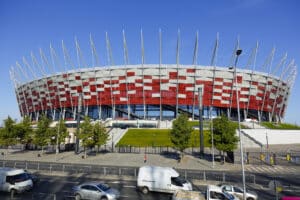
The national team plays in two main stadiums: Stadion Narodowy (also known as PGE Narodowy and Stadion Narodowy im. Kazimierza Górskiego) and Stadion Śląski. Stadion Narodowy is in the Praga Południe District, across the river from the city center of Warsaw. The stadium was built between 2008 and 2011, on the site of the former Stadion Dziesięciolecia. It seats 58,580 and hosts concerts as well as various sporting events. Notable games played at this location include UEFA Euro 2012 games and the 2014-2015 UEFA Europa League final.
The other main stadium for the national teams’ games is Stadion Śląski in Chorzów in southern Poland. Built in the 1950s, it was renovated and modernized between 2009 and 2017, during which it was not in operation. In the 1990s and 2000’s it was the main Polish national stadium because the stadium in Warsaw was not in good shape. After the rebuilding of the Warsaw stadium, it lost that role but still hosts some national team games and concerts for up to 55,211 spectators. It did not make the cut to be a stadium for the 2012 or 2020 Euros, but it often hosts Ekstraklasa games, mostly for the club Ruch Chorzów.
Legia Warsaw
Legia Warsaw, also known as Legia Warszawa, is a Polish soccer club that plays in the Ekstraklasa, the top flight of Polish soccer. The club is the most successful Polish club in history, having won the Ekstraklasa a whopping total of 15 times.
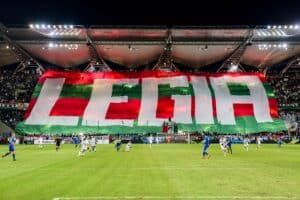
The team was formed in 1916 as the club of the Polish Legions during a World War I military operation on the Eastern Front. After the war, the club was reactivated in Warsaw in 1920. It merged with another club called Korona in 1923 and became known as Legia Warszawa. The club is still regarded as the main official soccer club of the Polish Army because of their origin. Its nicknames: Wojskowi (The Soldiers) and Legioniści (The Legionaries) also reflect its heritage. The team won their first trophy, in the Polish Cup, in 1955 and a month later their first Polish championship.
The early 90’s was a rough patch for the club, as Legia had some bottom-table finishes and narrowly avoided relegation. In the fall of 1992, the team got their first private sponsor, when businessman Janusz Romanowski invested in the club. The sponsorship allowed for a higher budget and allowed the team to rebuild in the coming years.
Most recently the club won the Ekstraklasa in back-to-back seasons, 2019/2020 and 2020/2021. Their 2021 season win was helped by Czech player Tomáš Pekhart who led the league with 22 goals that season, and Croatian international Josip Juranović who led the team with 8 assists and finished the season tied for second across the whole league.
The team plays in Stadion Wojska Polskiego (The Polish Army Stadium), officially called Stadion Miejski Legii Warszawa im. Marszałka Józefa Piłsudskiego (Marshall Józef Piłsudski Legia Warsaw Municipal Stadium). It was built in 1930 and, in 2008-201, underwent reconstruction that only kept a small part of the original facade. It seats 31,800 people. One of the stands in the stadium, dubbed “Żyleta,” is where all the diehard Legia fans congregate to watch the games. These soccer ultras are known for their passion, lighting of flares, and elaborate stunts where choreographed posters held up by fans create a huge image on the stands. These are often used as protest pieces (including against the European soccer organization, UEFA). The grounds of the stadium include a heated grass field, a training field, a restaurant, and a team museum. At one point the stadium belonged to the Polish Army but it is now owned by the City of Warsaw. The stadium is located close to the center of Warsaw, near Łazienki Park.
Lech Poznań
(Railway Sports Club Lech Poznań), or Lech Poznań for short, is a football team from the city of Poznań in western Poland. They play in the highest tier of Polish soccer, the Ekstraklasa. Lech Poznań has won the Ekstraklasa a total of eight times, the majority of which were in the 1980s and 1990s, and most recently during the 2021/2022 season.

The team was formed in 1920 by a group of teenagers who split off from the Catholic Youth Association and formed their own club. The team was officially registered two years later, in 1922 with the name Lutnia Dębiec. Between 1930 and 1994 the team was closely linked to the Polish State Railways (PKP) hence the team’s nickname Kolejorzy (The Railway Men). The historic connection to the PKP is why Kolejowy Klub Sportowy (Railway Sports Club) is part of the team’s official name, even to this day.
The club began getting trophies in the 1980s. Despite being around for six decades, Lech only won their first title, the Polish Cup, in 1982. This boost of success is often attributed to coach Wojciech Łazarka, who managed the team between 1980 and 1984. In the next season, the club won both the Ekstraklasa title and the Polish Cup, ushering in an era of many victories. During the 80s and 90s the team won the Polish Cup in the 1981/82, 1983/84, and 1987/88 seasons and the Ekstraklasa championship in the 1982/83, 1983/84, 1989/90, 1991/92, and 1992/93 seasons. During this time, Lech Poznań also participated in the Champions League and the Europa League which are competitions for only the top teams in all of Europe.
In 2000 the club was again not doing well: they got relegated from the Ekstraklasa and in their first season post-relegation they almost got relegated even further down. They avoided further relegation and shortly made it back up to the top league by 2002. In 2008, Lech Poznań signed young striker Robert Lewandowski who scored an abundance of goals and helped the club immensely in his two years there. Recently, in 2021/2022 (the club’s 100th season) the team won the league championship and finished runners-up in the Polish Cup.
Lech plays their home games at Stadion Poznań (Poznań Stadium) also called the Stadion Miejski w Poznaniu (Municipal Stadium in Poznań). The stadium took 12 years to build and was completed in 1980. From 2003 to 2010 the stadium underwent a 760 million złoty (190 million dollar) major reconstruction during which four new covered stands were built. It currently seats 43,269 people. When Poland was a co-host of the 2012 UEFA Euro the stadium hosted three games between the Republic of Ireland, Italy, and Croatia. As of 2016, right outside the stadium there is a train (a Ty51-183 locomotive) donated by the PKP as a symbol of the club’s connection to the Polish railway corporation.
Raków Częstochowa
Raków Częstochowa is a Polish football team that currently plays in the top Polish soccer league, the Ekstraklasa. They play in south Poland and have only recently been promoted back to the top league after decades of spells in the second, third, and fourth divisions.
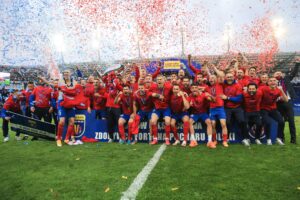
In 1921 the team Rakovia was established in the village of Raków but soon dissolved in 1925 because they were not registered. In 1927 the club was reactivated as Robotniczy Klub Sportowy Raków (Workers’ Sports Club of Raków) and the next year the village became a district of Częstochowa. The club operated under the support of the Polish Socialist Party and the financing from the steelworkers of Częstochowa. Just like all other Polish football, the club did not play during World War II.
Before 1994, Raków Częstochowa spent all their seasons in the second, third, and even fourth tiers of Polish football, but in 1994 they were promoted to the first tier, the Ekstraklasa, for the first time. They played there for four seasons until suffering relegation back down to the second division. From the second league (1 Liga), Raków dropped down two more times, in 1999/2000 and 2000/2001, ending up back in the fourth tier. The club climbed back up to the Polish second division after the 2016/2017 season, and then got back to the Ekstraklasa in time for the 2019/2020 season. The club plays with width, pace, physicality, and technicality that make them a dangerous opponent. The team has a mix of young talent and a few veteran players that combined bring in good results. The team has made many successful yet frugal signings of players thanks to former coach Marek Papszun (2016-2023) that have become vital assets to the team and fueled their current and likely future success.
Despite their rollercoaster ride of success and failure to get to their current standing, Raków won the Polish Cup in 2020 and 2021 and were the runners up for the Ekstraklasa title, finishing second in the league in both 2020 and 2021. After the two close finishes, Raków Częstochowa finally won the 2022/2023 Ekstraklasa season. Currently as of mid-July 2023, the team is about to play their second round of qualification for the 2023/2024 Champions League season against Azerbaijani club Qarabağ. In Raków’s first qualifying round they beat FC Flora from Estonia 4-0 on aggregate.
Unlike bigger clubs like Legia Warsaw and Lech Poznań, Raków Częstochowa has a very modestly sized stadium. Their stadium Miejski Stadion Piłkarski “Raków” (Raków Municipal Football Stadium) was built in 1955 and only holds 5,500 people. After promotions to higher divisions the stadium has had to be upgraded and updated to fit the licensing requirements of that division, but all these renovations have done the bare minimum needed. The stadium is a symbol of the team’s ragtag and humble recent past – but will likely need to be wholly replaced if the team’s popularity and success keep up.
You Might Also Like
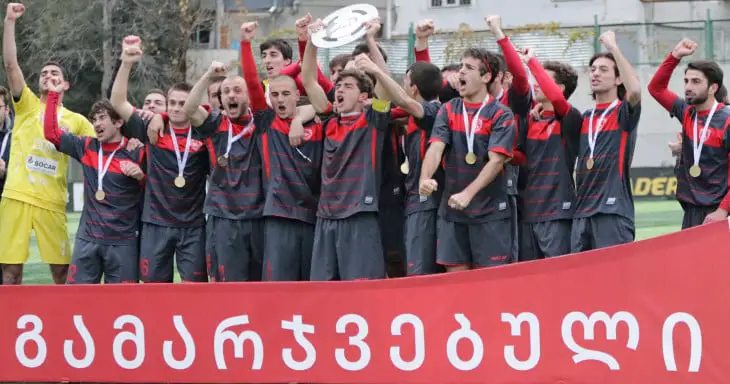
Georgian Soccer: An Introductory Guide
The history of soccer in Georgia goes back to the late 1800s, when it was brought to country by English sailors shortly after the sport was invented. Although Georgia was an early adopter of the sport, its development has been arguably held back by colonialism. Georgia was largely a backwater for Soviet soccer and the […]

Watching FC Kairat Almaty at Almaty Central Stadium
For traveling soccer fans, attending a live game is a wonderful way to experience a unique part of local culture. Despite being a truly global sport, soccer has a unique culture everywhere it is played. Whether it be the chants or the food at the concessions, there is always something to learn about the local […]
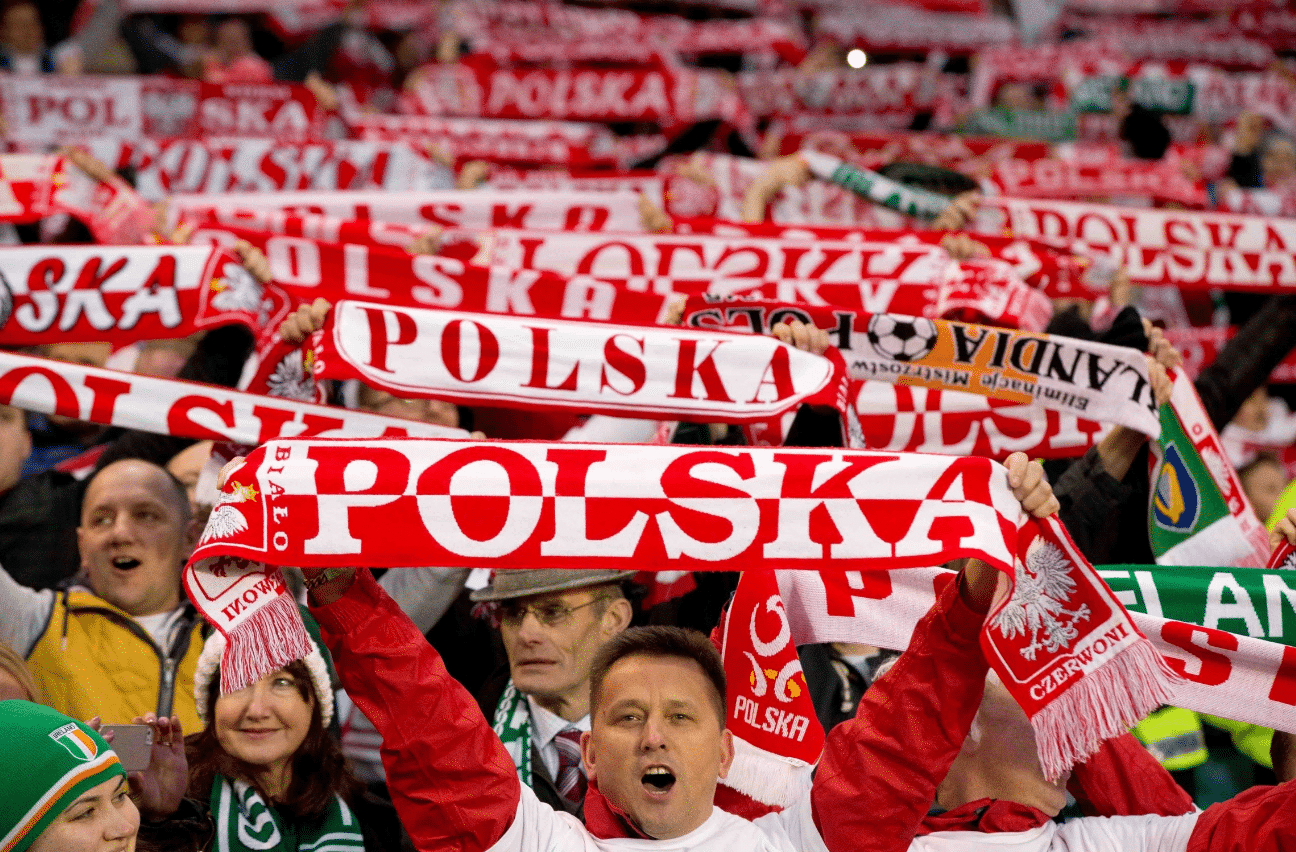
Polish Soccer: An Introductory Guide
The history of soccer in Poland begins when the county didn’t technically exist – having been partitioned by larger powers. Like the rest of the country, Polish soccer eventually united after Poland was reassembled after WWI. Soccer was again set back in WWII when the Nazis banned the Poles from organizing games, fearing that fed […]

Kyrgyz Soccer: An Introductory Guide
The history of soccer in Kyrgyzstan goes back to 1921, with an oft-cited first match taking place in Bishek, Kyrgyzstan’s capital city, against a team from Kazakhstan. The Kazakh team won, but not before the sport of soccer staked a permanent claim on the Kyrgyz national consciousness— the game’s been culturally significant ever since. However, […]
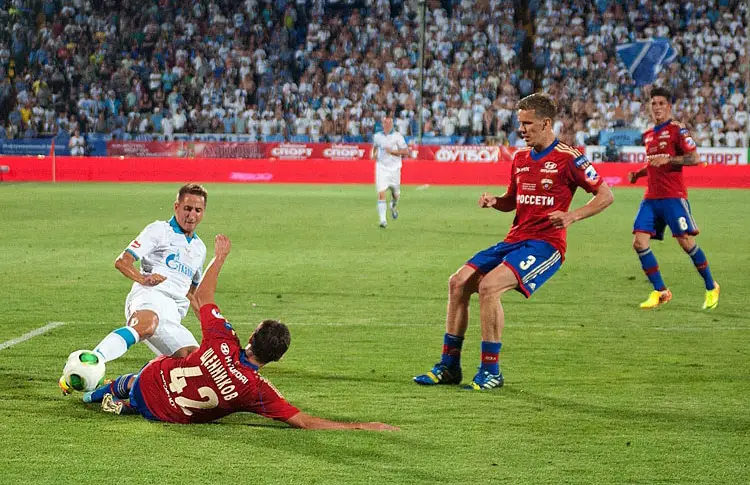
Russian Soccer: An Introductory Guide
Russian soccer caught the world’s attention in 2018, when Russia hosted a very successful FIFA World Cup. The game is Russia’s most popular national sport, ranking just above hockey, and Russia poured millions into new stadiums and renovations on older, Soviet-built stadiums. This construction was made as a point of pride for the Russian government, […]



